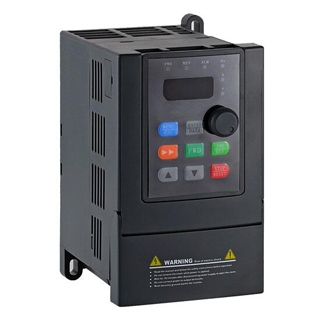A single phase output inverter is an electronic device that converts direct current (DC) power into alternating current (AC) power with a single sinusoidal waveform. In other words, it takes the electrical energy from a DC source, such as a battery or a solar panel, and produces a single-phase AC output that can be used to power household appliances, electronic devices, or other equipment that requires AC power.

Basic Information
Single phase output inverters are commonly used in residential and small-scale commercial applications where the power requirement is relatively modest. They are versatile and can be employed in various scenarios, including off-grid systems, backup power systems, and in conjunction with renewable energy sources like solar panels.
It's important to note that single-phase inverters differ from three-phase inverters, which generate three sinusoidal AC waveforms. The choice between single-phase and three-phase depends on the specific electrical requirements of the connected equipment or appliances.
Waveform Types
Single phase output inverters typically produce a sine wave output, which is the preferred waveform for most household and commercial appliances. Some inverters may produce a modified sine wave, which is a stepped waveform and may be suitable for certain types of equipment but could potentially cause issues with others.
The following is a detailed explanation.
Single-Phase Inverters:
A single-phase inverter produces a single sinusoidal (or sine wave) alternating current (AC) output.
In the context of electricity, "single-phase" refers to a system where electrical power is distributed using one phase conductor and one neutral conductor. This is the typical setup in most residential settings.
Single-phase inverters are suitable for powering common household appliances, electronics, and lighting.
Three-Phase Inverters:
In contrast, a three-phase inverter generates three sinusoidal AC waveforms, each out of phase with the others by 120 degrees.
"Three-phase" refers to a system where electrical power is distributed using three phase conductors and one neutral conductor. This is more common in industrial and commercial applications.
Three-phase power is often preferred for larger machinery, motors, and equipment due to its ability to provide a more constant and balanced power supply.
Choosing Between Single-Phase and Three-Phase:
The choice between single-phase and three-phase depends on the specific electrical requirements of the connected equipment or appliances.
Single-phase power is sufficient for typical household needs and smaller commercial applications. It's cost-effective and simpler to install.
Three-phase power is favored for industrial machinery and large-scale equipment where a more stable and balanced power supply is required. It is also more efficient for transmitting power over longer distances.
Considerations:
When designing an electrical system, it's essential to match the type of inverter (single-phase or three-phase) with the power requirements of the connected devices.
Residential areas typically use single-phase power, while industrial and commercial settings might employ three-phase power for larger loads.
In some cases, a combination of single-phase and three-phase inverters may be used to meet the diverse needs of a particular facility.
Applications
Single Phase Output Inverters are commonly used in household settings to power appliances, electronics, and lighting. They are also suitable for small businesses, mobile homes, and remote locations where a single-phase power supply is sufficient.

Size and Capacity
These inverters come in various sizes and capacities, ranging from a few hundred watts for small applications to several kilowatts for larger residential or commercial setups. The size of the inverter should match the power requirements of the connected devices.
Efficiency
The efficiency of single phase output inverters is an important factor to consider. Higher efficiency means less energy loss during the conversion process. Look for inverters with a high efficiency rating to optimize energy usage.
Grid-Tie Inverters
Some single phase output inverters are designed for grid-tie systems, allowing users to feed excess energy back into the electrical grid. This is common in solar power installations where surplus electricity generated by solar panels can be shared with the grid.
Off-Grid Systems
In off-grid scenarios, such as remote cabins or locations without access to the main power grid, Single Phase Output Inverters paired with battery banks are essential for providing a stable AC power source.
Protection Features
Quality inverters often come with built-in protection features, including over-voltage protection, under-voltage protection, over-temperature protection, and short-circuit protection. These features enhance the safety and longevity of the inverter and connected devices.
Installation and Maintenance
Single Phase Output Inverters are generally designed for easy installation and maintenance. However, it's important to follow manufacturer guidelines for installation, and regular maintenance checks are recommended to ensure optimal performance.
When choosing a single phase output Inverter, it's crucial to consider the specific requirements of the intended application to ensure compatibility and efficient operation.
If you require other types of inverters, please visit inverter.com.
